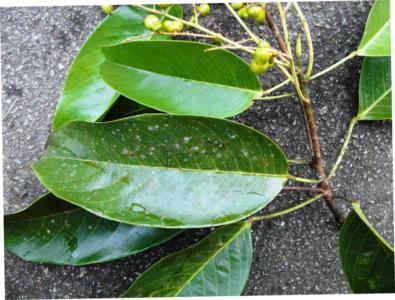Chinese boxwood
(Maesa paniculata)

Description
Maesa paniculata, commonly known as the Chinese boxwood, is a captivating evergreen shrub that belongs to the primrose family (Primulaceae). Renowned for its attractive foliage and delicate white flowers, this plant has become a favorite among gardeners and plant enthusiasts around the world. In this article, we will explore the various aspects of Maesa paniculata, including its taxonomy, distribution, morphology, cultivation, and potential uses. Taxonomy and Classification Maesa paniculata is native to East Asia and is primarily found in China, Japan, and Taiwan. It thrives in a variety of habitats, including forests, woodland edges, and hillsides. In its natural environment, Maesa paniculata tends to grow in shaded areas with well-drained soil. Morphology and Characteristics Maesa paniculata is a compact evergreen shrub that typically reaches a height of 1-2 meters (3-6 feet). It features glossy, ovate leaves that are arranged in an opposite manner along the stems. The leaves are dark green in color and possess prominent veins. The plant produces small, fragrant, white flowers in dense clusters or panicles during the spring season. Cultivation and Care Climate: Maesa paniculata thrives in mild to warm temperate climates. It prefers temperatures ranging from 15°C to 25°C (59°F to 77°F). It can tolerate light frosts but may suffer damage in severe winter conditions. Light: The Chinese boxwood prefers partial shade or filtered sunlight. It can tolerate full sun in cooler regions but may require more shade in hotter climates. Soil: Well-drained, loamy soil with a slightly acidic to neutral pH (around 6.0 to 7.0) is ideal for Maesa paniculata. Adequate organic matter should be added to improve soil fertility and moisture retention. Watering: While Maesa paniculata prefers consistent moisture, it is important to avoid waterlogged conditions. Water the plant deeply but infrequently, allowing the soil to dry out slightly between waterings. Fertilization: Apply a balanced slow-release fertilizer during the growing season to promote healthy growth. Follow the manufacturer's instructions for proper dosage. Pruning: Regular pruning helps maintain a compact shape and encourages bushier growth. Prune in early spring before new growth appears, removing any dead or diseased branches and shaping the plant as desired. Pest and Disease Control: Maesa paniculata is generally resistant to pests and diseases. However, it may occasionally face issues such as aphid infestations or powdery mildew. Monitor the plant regularly and take appropriate measures, such as using insecticidal soap or fungicides if necessary. Uses and Benefits Ornamental Plant: Maesa paniculata is highly valued as an ornamental shrub in gardens and landscapes. Its attractive foliage and delicate white flowers make it an excellent choice for borders, hedges, and foundation plantings. Bonsai Cultivation: The Chinese boxwood's compact size and dense foliage make it well-suited for bonsai cultivation. Its small leaves and ability to tolerate pruning and shaping make it an ideal candidate for bonsai enthusiasts. Medicinal Purposes: In traditional Chinese medicine, certain parts of Maesa paniculata, such as the leaves and stems, are used for their medicinal properties. They are believed to have anti-inflammatory, analgesic, and diuretic effects. Extracts from the plant have been studied for their potential in treating rheumatoid arthritis and urinary disorders. Environmental Benefits: Maesa paniculata, like other plants, contributes to the overall health of the environment. It helps in reducing soil erosion, improving air quality by absorbing pollutants, and providing habitat for beneficial insects and birds. Cultural Significance: In some cultures, Maesa paniculata holds cultural or symbolic significance. For example, in Japan, it is associated with the concept of "shinrin-yoku" or forest bathing, where spending time in nature is believed to promote mental and physical well-being. Conservation Status Currently, Maesa paniculata is not considered globally threatened or endangered. However, like many plant species, it may face habitat loss and degradation due to urbanization, deforestation, and agricultural activities. Conservation efforts should focus on preserving its natural habitats and promoting sustainable cultivation practices to ensure the continued existence of this plant. Conclusion Maesa paniculata, or the Chinese boxwood, is an enchanting evergreen shrub that combines beauty and versatility. With its glossy leaves, fragrant flowers, and adaptability to various growing conditions, it has earned its place in gardens, landscapes, and even bonsai collections. Whether appreciated for its ornamental value, medicinal properties, or environmental contributions, Maesa paniculata remains a plant of remarkable interest and significance. By understanding its taxonomy, distribution, morphology, cultivation, and potential uses, plant enthusiasts can cultivate and appreciate this fascinating species while contributing to its conservation and appreciation for generations to come.
Taxonomic tree:







